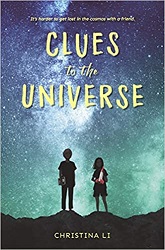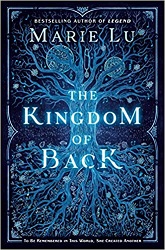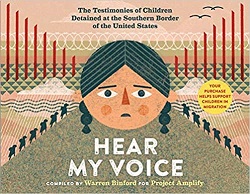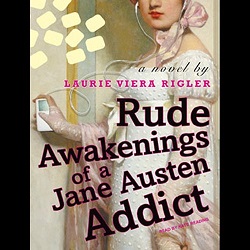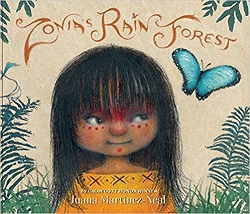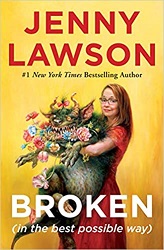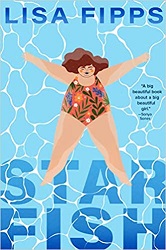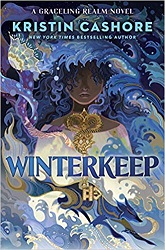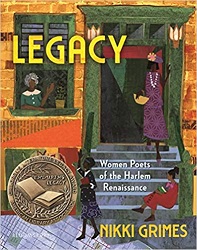Review of Intimate Conversations with the Divine, by Caroline Myss
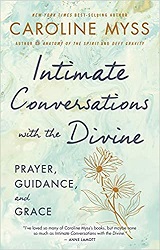 Intimate Conversations with the Divine
Intimate Conversations with the Divine
Prayer, Guidance, and Grace
by Caroline Myss
Hay House, 2020. 271 pages.
Review written May 10, 2021, from my own copy, purchased via amazon.com
Starred Review
I wasn’t completely sure what to expect with this book. Knowing she’s a medical intuitive, I was expecting something New Age-y. But I’m going to list it in the “Christian” section of my review page, because these are prayers addressing God as “Lord,” and I’m completely comfortable with them as a Christian. She does have a note at the front that her current idea of God doesn’t look a lot like the God she was taught about in her Catholic upbringing. She believes that humans crave love and crave the sacred. Her note finishes this way:
If there is one thing I could communicate to you with this book, it’s that our holy channel of communication with the Divine has nothing to do with religion. Heaven is not the formal organization that religion is. Leave all the formalities in your rearview mirror. And don’t let the misdeeds human beings have perpetrated in the name of religion stand in the way of your nourishing yourself with the grace of the Divine. Choose an intimate way of addressing the Divine in your prayers, one that works for you, and pray. If there’s one thing I know, it’s that all prayers are heard and heaven always responds.
This is a book about prayer and a book of prayers. In the Introduction, she talks about the importance of prayer:
When we pray, we ask the Divine to show us how to see, how to speak, how to create. We ask God to reveal, to illuminate, the right path for us. God, show me how to see this. Reveal your wisdom to me, Lord. Show me the way. One word will do. One word is all I need. Then, suddenly, the word hope arises in you. Or patience. This word, this revelation, becomes the most holy word you have. You can hang on to it; you can use it to guide you. This is the true meaning of prayer: a request for help in how to see.
This is why I had to write this book, to urge you toward this new way to pray, one that is not about supplication and asking God to remove the consequences of your bad decisions. It’s not to explain why bad things happen to good people – that’s above my pay grade. It’s to share my way of prayer, which is a simple request for grace. “Help me out here, God. Don’t let me say something stupid. Give me the words. If I try to do this on my own, I’m going to do damage.
The bulk of the book consists of one hundred of the author’s prayers, written out, prayers asking for grace. Along with each prayer, she includes Guidance – teaching about the issues coming up in this prayer. She also includes a shorter petition asking for a certain kind of Grace.
The prayers are from actual situations and problems, when she needed different graces, such as acceptance, determination, endurance, healing, or hope. There’s an index at the back of which grace is requested in which prayer.
She has this to say at the front of the prayers:
The pages that follow contain 100 of my own personal prayers. Many of my students use them as they are, reading and contemplating them. But truly, my intention is to inspire you to engage in a prayer practice of your own. Contemporary prayer is a dialogue with the Divine and is the conduit for grace to enter your life and our world. Each of these prayers illustrates a different type of grace that feeds the human soul. As such, I have included words of guidance as well as a petition for grace with each prayer.
I already had a prayer practice before reading this book – but reading a prayer from this book each day has become part of it. Now that I’ve gone through the whole book, I’m starting over again immediately. They are that encouraging. These prayers make me think, but even more than that, they make me feel heard. They remind me that God is paying attention to my life, and I want to pay attention to God.
This is a lovely set of prayers whatever your religious or non-religious background.
Find this review on Sonderbooks at: www.sonderbooks.com/Nonfiction/intimate_conversations_with_the_divine.html
Disclosure: I am an Amazon Affiliate, and will earn a small percentage if you order a book on Amazon after clicking through from my site.
Disclaimer: I am a professional librarian, but the views expressed are solely my own, and in no way represent the official views of my employer or of any committee or group of which I am part.
What did you think of this book?
